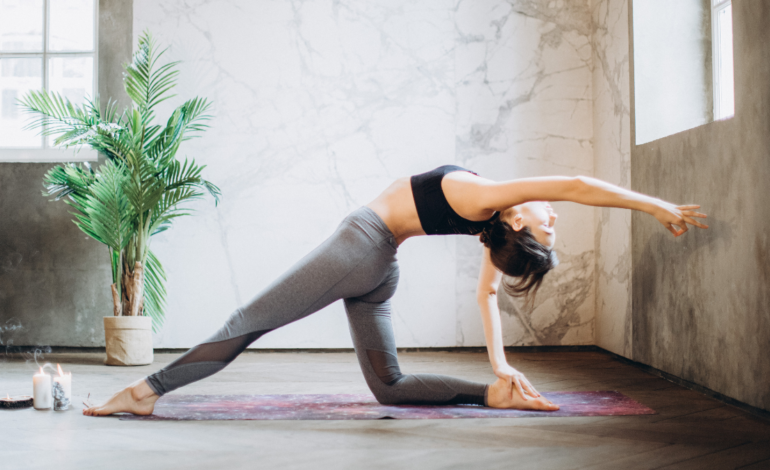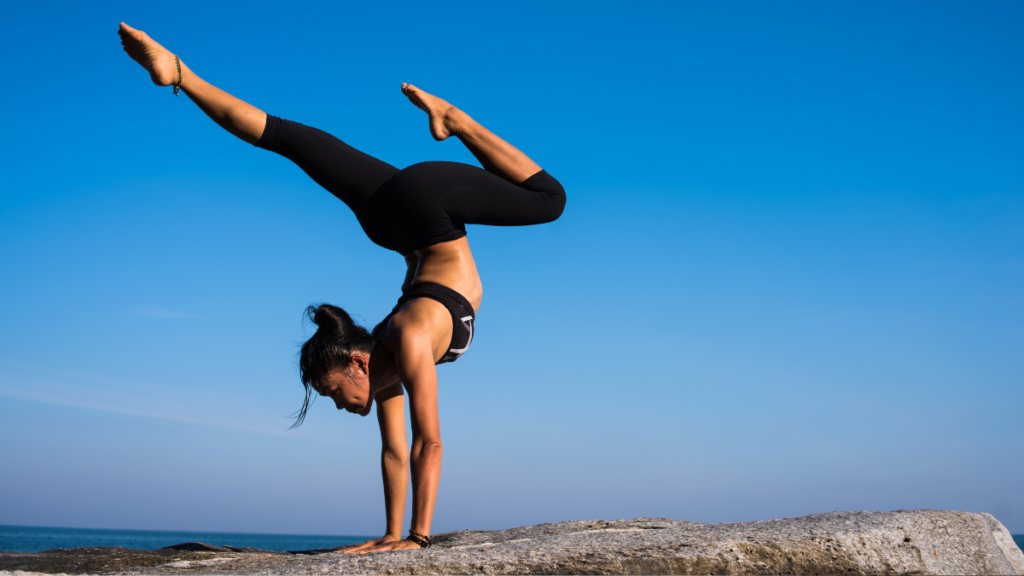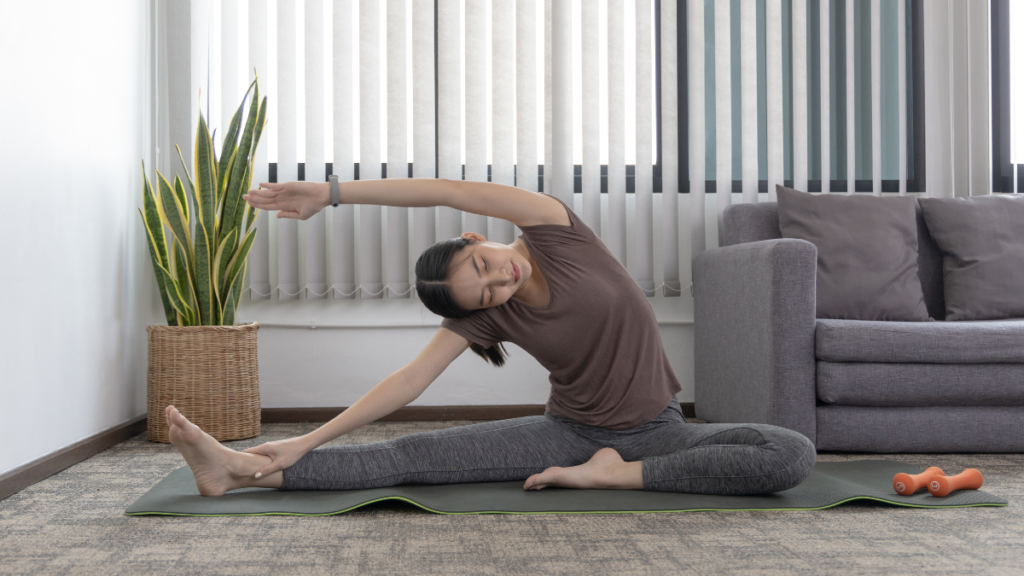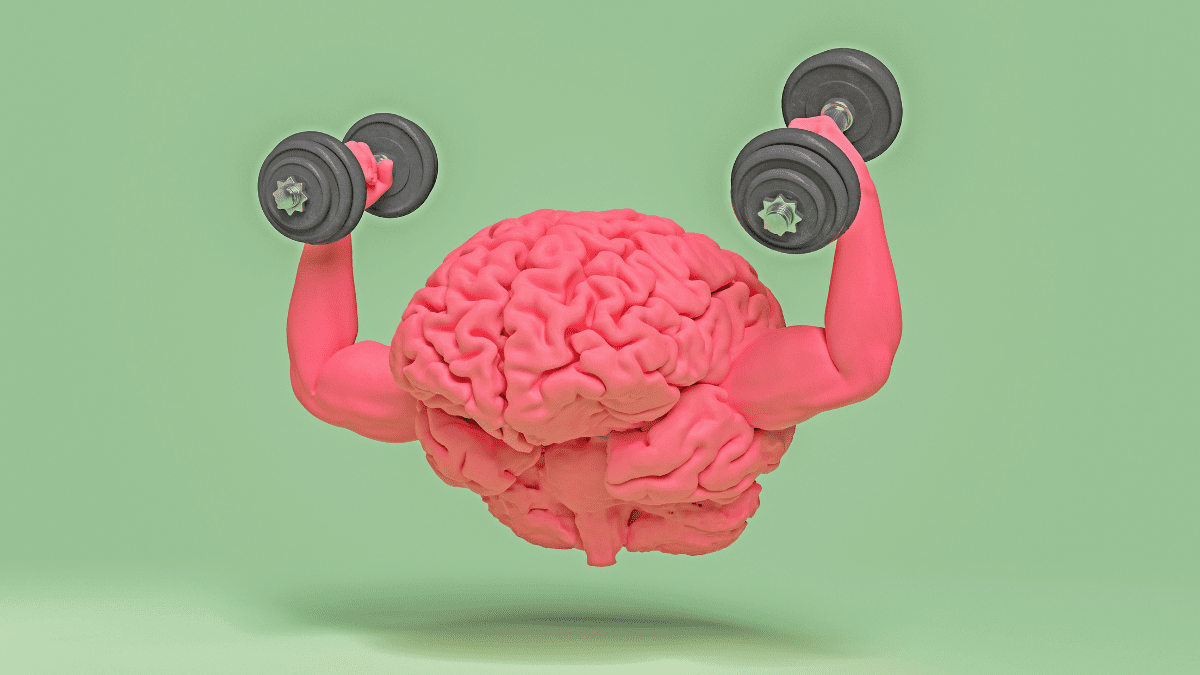Yoga for Stress Relief: Calm Your Mind, Free Your Soul
Yoga for stress relief calms the mind, eases tension, and restores inner balance. Through breath, movement, and mindfulness, it melts anxiety, helping you find peace and freedom in your soul.

Stress affects both the mind and body. It can cause anxiety, tension, and fatigue. Yoga for stress relief is a simple way to restore balance and find calm. It combines movement, breath, and mindfulness to ease stress naturally.
In today’s fast-paced world, slowing down is essential. Yoga helps relax muscles, clear the mind, and improve well-being. It also lowers stress hormones and promotes inner peace.
This article explores the science behind yoga for stress relief. You’ll learn the best poses, breathing techniques, and simple routines to reduce stress. By the end, you’ll have tools to calm your mind and free your soul.
Incorporating yoga into your daily routine can transform how you respond to life’s challenges. Additionally, developing emotional intelligence plays a crucial role in stress management. Discover more in our post Building Emotional Intelligence: The Truth About You.
How Yoga for Stress Relief Affects the Mind and Body
Stress is more than just a feeling. It triggers real changes in the body. When stressed, the brain releases cortisol, the “stress hormone.” This prepares the body for danger. While useful in emergencies, too much stress harms health. It can cause anxiety, insomnia, and even heart problems.
The Science Behind Yoga for Stress Relief
- Overactive Nervous System: Chronic stress keeps the body in fight-or-flight mode. This makes it harder to relax.
- Physical Tension: Stress can cause headaches, tight muscles, and digestion issues.
- Mental Fatigue: Long-term stress leads to brain fog, mood swings, and poor focus.
Why Yoga for Stress Relief is Important
Ignoring stress does not make it go away. Over time, it can lead to burnout. Studies show chronic stress shrinks the brain’s prefrontal cortex. This part controls decision-making and emotions.
Yoga for stress relief helps the body switch from tension to relaxation. Slow movements and deep breathing lower cortisol. Yoga also eases tight muscles and calms the mind. Just a few minutes a day can make a big difference.control, yoga helps lower cortisol levels, ease physical strain, and restore emotional balance.
The Science Behind Yoga for Stress Relief
Yoga does more than stretch the body. It affects the brain and nervous system too. Yoga for stress relief helps activate the parasympathetic nervous system. This is the body’s “rest and digest” mode. It lowers stress and brings a sense of calm.
How Yoga Lowers Stress Hormones
Research shows that regular yoga:
- Lowers cortisol, the main stress hormone.
- Improves heart rate variability (HRV), which helps the body recover from stress.
- Boosts serotonin and dopamine, chemicals that improve mood.
Breathwork in Yoga for Stress Relief
Breathing deeply sends a signal to the brain: it’s time to relax. Yoga uses pranayama (breath control) to reduce stress.
- Diaphragmatic Breathing – Slows the heart rate and calms the mind.
- Alternate Nostril Breathing – Balances the nervous system and improves focus.
- Ujjayi Breath (“Ocean Breath”) – Creates a steady, soothing rhythm.
Yoga for stress relief is more than exercise. It retrains the brain to handle stress better. A simple practice can bring deep relaxation and long-term benefits..

Best Yoga Poses for Stress Relief
Some yoga poses are especially good for stress relief. They relax the body and calm the mind. Yoga for stress relief focuses on slow, gentle movements that release tension.
Top Yoga Poses for Stress Relief
- Child’s Pose (Balasana) – Soothes the nervous system and encourages deep breathing.
- Legs Up the Wall (Viparita Karani) – Improves circulation and reduces anxiety.
- Cat-Cow Pose (Marjaryasana-Bitilasana) – Loosens the spine and relieves tension.
- Forward Fold (Uttanasana) – Stretches the back and relaxes the mind.
- Corpse Pose (Savasana) – Allows full-body relaxation and mental clarity.
How to Get the Most from Yoga for Stress Relief
- Hold each pose for 30 seconds or more. This helps activate the relaxation response.
- Focus on slow, steady breathing. Deep breaths enhance relaxation.
- Practice in a quiet space. Fewer distractions make it easier to stay calm.
Yoga for stress relief does not have to be long. Just a few simple poses can bring peace to your body and mind.
Breathwork and Meditation for Deep Relaxation
Breathing is one of the most powerful tools in yoga for stress relief. Conscious breathing techniques, known as pranayama, help calm the nervous system, lower heart rate, and reduce anxiety. Combined with meditation, breathwork allows the mind to slow down and let go of tension.
Best Breathwork Techniques for Stress Relief
- Diaphragmatic Breathing (Belly Breathing)
- Inhale deeply through the nose, letting your belly expand.
- Exhale slowly through the mouth, releasing all tension.
- Why it works: Activates the parasympathetic nervous system, reducing stress.
- Alternate Nostril Breathing (Nadi Shodhana)
- Close one nostril and inhale through the other, then switch.
- Repeat for 2–5 minutes.
- Why it works: Balances the brain’s hemispheres and enhances mental clarity.
- Ujjayi Breath (“Ocean Breath”)
- Inhale deeply through the nose while constricting the throat slightly.
- Exhale with a soft “ha” sound, keeping the breath steady.
- Why it works: Helps regulate emotions and calms the mind.
How Meditation Enhances Yoga for Stress Relief
- Guided Meditation: Using apps or recorded sessions to focus the mind.
- Body Scan Meditation: Bringing awareness to different parts of the body to release tension.
- Mindful Breathing: Simply observing each inhale and exhale to stay present.
Pairing these yoga for stress relief breathwork techniques with meditation creates a powerful way to quiet the mind, relieve anxiety, and restore emotional balance.
How to Build a Stress-Relief Yoga Routine
Creating a consistent yoga for stress relief routine doesn’t require hours of practice. Even 10–15 minutes a day can help reset your nervous system, improve mental clarity, and promote relaxation. The key is consistency over intensity—regular practice will train your body and mind to handle stress more effectively.
Simple 15-Minute Yoga Routine for Stress Relief
- Start with Deep Breathing (2 minutes)
- Practice Diaphragmatic Breathing or Alternate Nostril Breathing to activate relaxation.
- Gentle Warm-Up (3 minutes)
- Flow through Cat-Cow Pose to release spinal tension.
- Add Neck Rolls to relax shoulder stiffness.
- Key Poses for Stress Relief (7 minutes)
- Child’s Pose – Grounding and calming.
- Forward Fold – Eases tension in the back and mind.
- Legs Up the Wall – Enhances circulation and soothes the nervous system.
- End with Savasana and Meditation (3 minutes)
- Lie flat in Corpse Pose and focus on slow, steady breathing.
- Optionally, follow a guided meditation to deepen relaxation.
Best Time of Day to Practice Yoga for Stress Relief
- Morning: Clears mental fog and prepares you for the day.
- Evening: Helps release built-up tension and improves sleep quality.
- Midday Break: A short session can reset your energy and focus.
For a deeper dive into how yoga impacts mental well-being, check out Harvard Health’s article on yoga and stress relief. Their research highlights how yoga reduces cortisol levels and enhances emotional resilience.
By committing to a short but effective yoga for stress relief routine, you can gradually train your body and mind to manage stress more efficiently.

Lifestyle Tips to Complement Yoga for Stress Relief
While yoga for stress relief is a powerful tool, combining it with other healthy habits can further enhance its effects. Small lifestyle changes can help you maintain a calm, balanced mind and body throughout the day.
1. Nourish Your Body with Stress-Relieving Foods
Your diet plays a key role in managing stress. Incorporate:
- Magnesium-rich foods (leafy greens, almonds, dark chocolate) to relax muscles and reduce tension.
- Herbal teas like chamomile or ashwagandha for natural calming effects.
- Omega-3 fatty acids (found in salmon, flaxseeds, and walnuts) to support brain health.
For more details on how diet impacts stress levels, read Cleveland Clinic’s guide to stress-relieving foods.
2. The Power of Journaling and Gratitude Practices
Writing down your thoughts can help release emotional tension. Try:
- Morning journaling to set a positive intention for the day.
- Gratitude lists to shift focus away from stress and onto what’s going well.
3. Reduce Digital Overload
Excessive screen time, especially before bed, overstimulates the brain. To improve mental clarity:
- Set screen-free hours, particularly in the evening.
- Try a digital detox once a week to reset your mind.
- Use blue light filters on devices to support better sleep.
By incorporating these simple lifestyle adjustments alongside yoga for stress relief, you can create a holistic approach to managing daily stress and enhancing well-being.
Conclusion: Embrace Peace Through Yoga for Stress Relief
Life is full of challenges, but stress doesn’t have to control you. Yoga for stress relief helps calm the mind, ease tension, and bring balance. With simple poses, deep breathing, and mindfulness, you can train your body to relax.
Even a short practice can lower stress hormones and improve mental clarity. The key is consistency. A few minutes each day can make a big difference.
Want to learn more? Johns Hopkins Medicine explains how yoga supports mental and physical health.
Stress is a part of life, but peace is a choice. Through yoga for stress relief, you can find calm, feel lighter, and move forward with more ease.
FAQ: Common Questions About Yoga for Stress Relief
1. How often should I practice yoga for stress relief?
Even 10–15 minutes a day can help lower stress. For deeper benefits, aim for 3–5 sessions per week. The key is consistency, not duration.
2. What type of yoga is best for stress relief?
Gentle styles like Hatha, Yin, and Restorative yoga are best. They focus on slow movements, deep stretching, and relaxation.
3. Can yoga really lower stress and anxiety?
Yes! Studies show that yoga reduces cortisol levels, slows heart rate, and calms the nervous system. It also improves focus and emotional balance.
4. When is the best time to do yoga for stress relief?
- Morning: Clears your mind for the day ahead.
- Evening: Helps unwind and improve sleep.
- Midday: A quick reset for energy and focus.
5. Do I need to be flexible to start yoga?
No! Yoga is about relaxation, not flexibility. Start with simple poses and move at your own pace.
6. Can breathwork alone help with stress?
Yes! Breathing exercises like diaphragmatic breathing and alternate nostril breathing activate the body’s relaxation response, easing stress in minutes.
By making yoga for stress relief part of your daily life, you can build a stronger, calmer mind. Ready to start? Just take a deep breath and begin.







